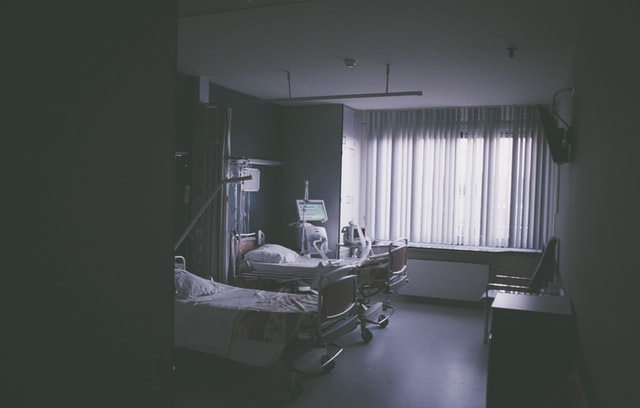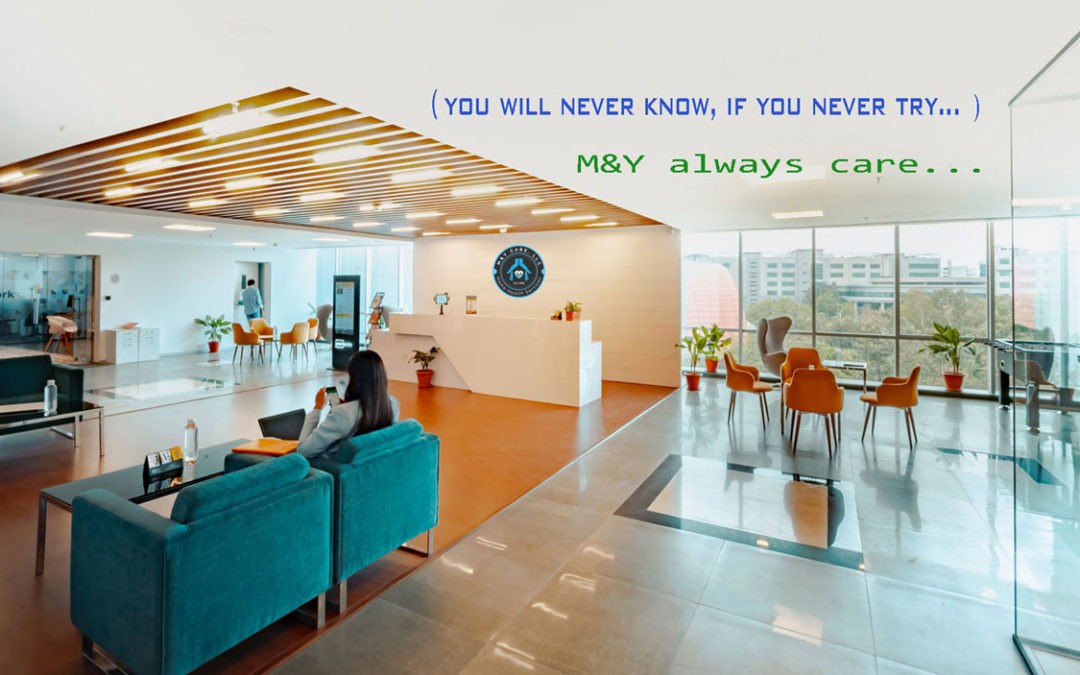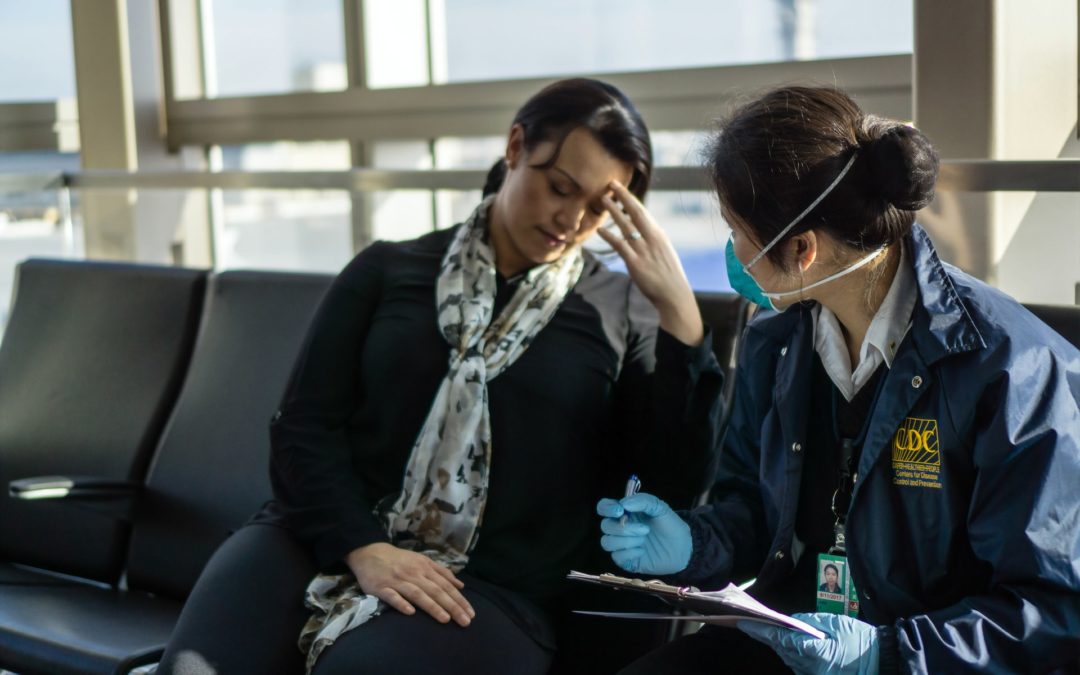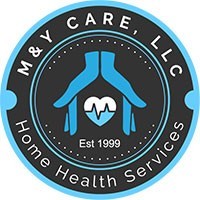
by M | Mar 29, 2020 | News |
Home health, hospice and homecare providers should prepare to be called on to handle a surge of patients as hospitals are overwhelmed by the coronavirus epidemic, one provider who has been at the forefront of the crisis said Wednesday.
Brent Korte is chief homecare officer for EvergreenHealth in Kirkland, Washington; Evergreen’s hospital was the first to register a COVID-19 death and his system has been working under emergency conditions for more than three weeks. He spoke on a webinar hosted by the National Association of Homecare & Hospice (NAHC), outlining their actions and recommending best practices for other agencies.
“Our industry is uniquely situated because we understand the science and the art of delivering health care in the community and we know that hospitals are going to be completely overwhelemed,” Korte said. “I think we’re all going to be called on.”
Korte, who is a NAHC board member, described his organization’s experience, starting with a call at 10 p.m. on a Friday night in late February—before COVID-19 was in the mainstream news. His health system is just two miles due west of the Washington skilled nursing facility that made news as the epicenter of the outbreak, and the EvergreenHealth hospital reported the first U.S. death from coronavirus.
Fortunately, the EvergreenHealth system had already done a lot of emergency planning and incident command rehearsal, in part because it’s in an earthquake zone. In the earliest days, he said, most of the senior team was working up to 20 hours a day; the CDC was on site and used Evergreen as a model for many policies, he added.
“We were not the fire, we were the fire department, and we had to change our mentality very quickly in order to react to something we had never dealt with before,” Korte said. Here’s the advice he gave:
- Protect Your People
“Without our people we cannot provide care,” Korte said. “Our focus at Evergreen has been on the safety of our staff. If our staff are heathy, we can go out and take care of people in the field.”
That means caring for their physical safety—more on that below—and ensuring they’re supported.
He said his organization is actually below census, down about 100 patients from a peak of around 1,245. That’s likely because hospitals are cancelling elective surgeries. He said to look at ways to use underbooked physical and occupational therapists to free up registered nurses. Can skilled staff handle simple wound care, for example?
At the same time, he said, it’s worth discussing whether you’re endangering patients by sending caregivers into their homes. By treating people at home, home health can lift the burden on hospitals. But by treating people, are you expanding the infection vectors? At Evergreen, they’ve decided that non-essential visits should be conducted online when possible, but if patients need help or families request in-person hospice services, help will be provided.
“We have 600 highly skilled professionals who know about infection control and we know that they’re a much lesser vector, if not nonexistent compared to the general public,” he said. “But we do need to say out loud that there’s a measured choice that we need to make.”
- Conserve PPE
Access to personal protective equipment (PPE) played a large part in the discussion and questions from the audience. Korte said that shortages are unavoidable but over-ordering hurts everyone.
The best approach, he said, is to pay attention to the science and make adjustments to your protocol as necessary. If infection cases are low, use less. As they ramp up, get stricter. But resist the temptation to over-protect, he said. If a mask will do, full coverage is only wasteful.
“We feel that conservation is absolutely as critical as procurement,” he said. “Ask yourself: Would you rather your staff have two weeks of overprotection or eight weeks of adequate protection?”
That may require being firm with your staff and with your vendors. He also recommended making projections about supplies on hand and future needs, even if they’re wrong later.
Molly McDonald, Evergreen’s quality and regulatory manager, said they were also keeping an eye on non-PPE supplies, especially wound care materials and catheters.
- Communicate Well
Whether it’s shifting rules for PPE usage or other protocols, it’s critical to communicate clearly with staff on the ground. He said his organization has sent a daily update by email, held weekly meetings online for all 600 staff members to answer pre-submitted questions (he said more than 600 people showed up—he’s not sure who the extras were), and done special one-on-one outreach to staff members who were struggling. Hospice volunteers and chaplains took on the company phone list to check in with everyone individually.
“That’s 600 different perspectives, 600 different levels of fear,” he said. “We needed to be sure that everyone was up-to-date during this constant era of change.”
At the same time, be careful about consuming non-medical news, Korte said; listen to the white coats on TV but avoid speculation. Stick to the science, avoid social media and rumors, and encourage your team to do the same
- Think Globally, Act Locally
While a pandemic is global, treatment for an epidemic is ultimately local, and health care resources have been set in place based on assumptions for what the locality will need for care. He said that reactions in the suburban Northwest will be different from downtown Atlanta or rural Kansas—or in New York, which is being hit hardest right now.
At the same time, he said, home health is designed to provide community-based care and has a critical role to play during the crisis—but may see sicker patients than usual and more of them as hospitals run out of room.
“I feel that home-based care in the United States is really the community health care system,” he said. “We’re already out there in the community. People who are very sick with COVID-19 are going to hospitals to get treatment, but they’re going to be recovering at home.”
He added that one more thing to keep in mind is to make sure leadership is in lock step and prepared to handle the hard questions. And even though it’s hard to imagine right now, think about what you’ll be doing when all this is over.
“I can’t underscore enough that this is health care’s moment and this is homecare’s moment,” he said. “We are the fire department. We are not the fire.”
Source: HomeCare

by M | Mar 27, 2020 | News |
Those who provide home healthcare across the Lowcountry say they are helping protect some the people most vulnerable to the novel coronavirus.
Nurses, therapists, and caregivers provide in-home nursing care for folks who can’t do things like feed, bathe themselves or go to the doctor alone.
In fact, sometimes a caregiver is all they have.
At Intrepid USA Healthcare at Home, nurses, therapists, social workers, and caregivers are seeing patients in person if possible, through windows, over the phone, or video chats. They say they are most commonly using a Telehealth-like system called Tap Cloud, but have also been Facetiming or Skyping patients.
Intrepid’s staff says at home visits are critical and common for patients with congestive heart failure, chronic inflammatory lung disease (COPD), and diabetes.
Many of these patients need someone to regularly check-up on them to make sure they are getting lung and heart monitoring done and taking the proper medications.
Intrepid Patient Care Advocate Courtney Pavlovich says the best place to care for a patient is in their home because that is where they are most comfortable.
“Unfortunately they are crowded right now, but your homes not crowded,” Pavlovich says. “So that’s the good thing about it. If we’re able to come in there and see you to help monitor and manage your medical condition, keep you from going to the hospital, that’s the best route to go. It’s safer for them.”
In a time of social isolation across the country, local caregivers say even though they may have to practice physical distancing, they are not distancing themselves socially from the people who need them.
Taking care of these patients actually prevents them from being at risk. Going into a hospital right now could put them at an even higher risk of getting COVID-19.
If a patient were to be experiencing symptoms of COVID-19 or have the virus, healthcare officials say they would still see patients, just with personal protection equipment like masks, gloves, and gowns.
Multiple home health facilities say some families have been able to step up in over the past few days because they are off work.
However, for others, a caregiver or nurse is all they have around.
Pavlovich says its not uncommon to see nurses or other staff tending to these patients like family because of the strong relationships they develop.
“I hear at least on a daily basis about a clinician that’s gone and taken a patient food or you know, some of their needs,” Pavlovich said.
Sometimes grocery shopping is a part of a long-term or stay at home caregivers job, but more many it is not.
These home health providers are working normal schedules to ensure the safety of their patients.
They also say technology has made it easier to be able to just call and check in with patients, even a patient no longer under their care.
By Summer Huechtker | March 27, 2020 at 5:43 AM EDT – Updated March 27 at 6:32 AM
Source: Live5News.com
Copyright 2020 WCSC. All rights reserved.

by M | Mar 25, 2020 | News |
The ongoing coronavirus pandemic has been devastating for the vast majority of U.S. businesses. Yet for some companies, the global crisis has turned into a major boon.
Pharmaceutical corporations, teleconferencing companies and video-streaming services are all positioned for growth despite the broader economic landscape. Telehealth providers are likewise seeing a spike in business, with New Jersey-based Health Recovery Solutions (HRS) serving as the perfect example.
Founded in 2012 by CEO Jarrett Bauer and a couple of college friends, HRS has grown into one of the fastest growing telehealth companies operating in the home health care space.
Historically, HRS has promoted its technology as a way for home health providers and other organizations to lower costly hospital readmission. Now, it’s seeing widespread and skyrocketing demand specifically because of the coronavirus.
“It seems like overnight, the walls of hospitals and the U.S. health care system have been broken down,” Bauer told Home Health Care News. “And we’re not going back.”
Among its hardware and software offerings, HRS sells a remote monitoring kit that comes with blood pressure monitors, scales and pulse oximeters. To help health care providers tackle the coronavirus emergency, the company is also offering tech packages tailored to COVID-19.
So far, HRS has sold thousands of COVID-19 kits, according to Bauer. Many have been sent to providers in particularly hard-hit areas, including Washington, New York and California.
Similarly, providers have downloaded HRS software solutions and mobile apps “at a staggering pace,” noted Bauer, who got the idea for his company while pursuing his MBA at Johns Hopkins University and seeing his grandmother suffer through an avoidable hospital readmission related to heart failure.
“Necessity is the mother of innovation,” he said. “We will be the most advanced sector in all of America. It’s because we have to be. Every single person in the country wants [in-home telehealth] right now.”
Over the past two weeks, HRS has received a new order for one of its telehealth kits roughly every two hours. At the start of the first quarter, HRS projected to sell 16,000 kits in 2020; it now expects to sell more than 40,000 this year.
To help keep up with that demand, HRS has even had to expand its warehouse capacity.
Three months ago, the company’s warehouse held about 2,000 kits. HRS is in the process of expanding its warehouse capacity to more than 10,000 kits, Bauer told HHCN.
‘We need so much more’
Generally, the increased demand in HRS is coming from two main sources, according to Bauer.
A good chunk of the demand has come from home health agencies based out of large health systems. Such organizations are looking for hardware — tablets, pulse oximeters, blood pressure monitors and more — to help keep patients at home and out of their system’s hospitals
Even in a best-case scenario where the United States manages to contain the spread of coronavirus to about 20% of the adult population over the course of 18 months, American hospital beds would likely end up about 95% full, according to Harvard Global Health Institute data.
In a worst-case scenario where COVID-19 is spread to 60% of the U.S. adult population over six months, the country would likely need more than seven times the number of hospital beds it currently has.
At the same time, heightened demand is also coming from larger, standalone home health agencies specifically looking to use telehealth to streamline physician face-to-face (F2F) requirements. Using telehealth for F2F became an option after the Centers for Medicare & Medicaid Services (CMS) announced expanded policies last week.
CMS confirmed F2F can be conducted via telehealth on Friday.
“We were pushing for and advocating for the face to face being able to be performed virtually instead of needing to be done in person,” Bauer said. “That just had to happen.”
Still, physicians and other health care practitioners have much more leeway when it comes to getting reimbursed for telehealth services compared to home health providers. While home health providers can do F2F via telehealth, they typically can’t get paid for in-home visits delivered via telehealth technology.
Changing that will be crucial for home health providers to make a dent in the coronavirus pandemic.
“We still need so much more right now,” Bauer said. “How are we going to solve the [hospital] capacity issues in America? We need [providers] to be paid correctly, and we need [them] to be paid more.”
Overall, HRS partners with more than 150 medical centers across 40 states.
Bauer isn’t the only telehealth executive who’s bullish about the direction CMS is taking telehealth.
Mordy Eisenberg — COO and co-founder of Tapestry Telehealth, a company that has traditionally worked in the skilled nursing space — has an equally optimistic outlook.
“When I see these things being lifted in an emergency, it’s like — I think [policymakers] get it,” Eisenberg recently told HHCN. “They recognize that this is really effective and this needs to be done. I think, ultimately, they’re going to recognize that the costs are far lower, and maybe just accelerate some of the changes to the laws and make them more permanent.”
—– By Robert Holly | March 23, 2020
Source: Home Health Care News

by M | Mar 23, 2020 | News |
As manufacturers nationwide work to catch up to the skyrocketing demand for coronavirus diagnostics and supplies—and broaden access while limiting person-to-person contact, such as with drive-thru testing—companies are looking next to provide at-home COVID-19 exams through the mail.
Home health and wellness testing company Everlywell announced plans to ship personal collection kits to the public next week, combined with a telehealth consultation and diagnosis.
An initial supply of 30,000 tests is slated to be made available March 23. Everlywell said they should be requested online by people experiencing COVID-19 symptoms, after which users will overnight mail their swabs to the company’s lab testing partners.
“As the COVID-19 public health emergency continues to worsen with community spread across the United States, there is an unmet medical need to broaden the access to testing for SARS-CoV-2 coronavirus in a responsible manner to complement and help alleviate the potential overload on healthcare systems and healthcare providers if testing was only available in the limited clinical setting,” said Everlywell’s chief medical and scientific officer, Frank Ong.
The test will cost $135, which the company says will provide no profit and will be covered by participating health savings account providers. Positive results will be communicated as mandated to federal and state health agencies.
RELATED: FDA opens the gates to commercial coronavirus testing without agency review
Meanwhile, women’s and sexual health-focused telehealth startup Nurx said it is developing its own mail-in coronavirus test in partnership with service provider Molecular Testing Labs.
“Allowing people to take a COVID-19 test remotely can be a valuable strategy for containing the virus because it decreases the risk of exposure for both patients and in-person healthcare providers, while also decreasing the strain on brick-and-mortar healthcare services,” the company said in a blog post.
Last August, Nurx raised $52 million in a series C round—with backing from Kleiner Perkins’ Digital Growth Fund, Union Square Ventures, Reproductive Health Investors Alliance, Dreamers VC, Lowercase Capital, Y Combinator and Triple Point Capital—as an online provider of contraception, tests and other health needs.
Earlier this month, the Bill and Melinda Gates Foundation said it would pivot resources from a previously supported influenza surveillance project to deliver coronavirus self-test swabs to homes in the Seattle area. Those samples would then be mailed to the University of Washington for analysis.
—– By Conor Hale | Mar 19, 2020 3:30pm
Source: FierceBiotech

by M | Mar 20, 2020 | News |
Senate Republicans’ COVID-19 economic stimulus bill would suspend the Medicare sequester until the end of 2020, increase inpatient hospital add-on payments for treating COVID-19 patients, reduce restrictions on telehealth and boost funding to community health centers.
Negotiations on the legislation are ongoing, and Republicans need Democratic support to pass the legislation. House Speaker Nancy Pelosi (D-Calif.) and House Minority Leader Chuck Schumer (D-N.Y.) said in a statement Thursday that they want to see more stringent conditions placed on corporations that receive relief funds.
Suspending the Medicare sequester was a top priority of the American Hospital Association, Federation of American Hospitals, Association of American Medical Colleges, Greater New York Hospital Association and American Medical Association. The sequester, which reduced spending for most benefits by 2% starting in 2013, would be suspended from May 1 to December 31, 2020, according to the draft text.
“This action alone will provide immediate, significant relief across-the-board, and will signal continued congressional support for the hard work that lies ahead for all of us,” AHA, AAMC and FAH said in a joint letter asking congressional leaders to suspend the Medicare sequester on March 15.
However, the sequestration would be extended an additional year past its original end date to avoid “worsening Medicare’s long-term financial outlook,” according to background materials.
Senate Republicans also proposed a 15% inpatient hospital add-on payment for treating patients admitted with COVID-19.
Community health centers would receive $1.32 billion in supplemental funding for prevention, diagnosis and treatment of patients with COVID-19.
The text did not include provisions that would provide long-term funding that community health centers have called for, delay cuts to Medicaid disproportionate-share hospital payments or fund other Medicare and Medicaid programs that will expire May 22. Senate Majority Leader Mitch McConnell (R-Ky.) said Thursday that he wanted Congress to immediately start work on a fourth bill, which could be a vehicle for the healthcare policies.
“Immediately after we pass this legislation, Congress must begin a bipartisan, bicameral appropriations process to address the administration’s new supplemental funding request so we can keep funding healthcare and other priorities,” McConnell said.
The package temporarily waives requirements that home dialysis patients conduct visits with their physicians face-to-face.
The draft text would also allow the HHS secretary to develop and implement a new payment rule for federally qualified health centers and rural health clinics that provide telehealth services to eligible patients. Payment rates would be based on payment that currently applies to comparable telehealth services under the physician fee schedule, according to the text.
It’s a continuation of recent efforts from lawmakers and the Trump administration to reduce telehealth restrictions in the wake of the COVID-19 outbreak.
In an appropriations bill earlier this month lawmakers waived some Medicare restrictions on payment for telehealth so that seniors could use remote services for coronavirus treatment, and the Trump administration on Monday announced that Medicare would pay doctors and hospitals for a broad range of telehealth services on a temporary basis, effective March 6.
The package puts the HHS assistant secretary for preparedness and response in charge of managing the strategic national stockpile and requires medical supplies, including swabs used in diagnostic tests for COVID-19, to be stockpiled.
FDA policy would be amended so that laboratory developed tests and diagnostic kits could be used, and covered by private insurance plans, before receiving an emergency use authorization.
Insurers would be required to pay either a negotiated price with a provider or a cash price posted by the provider for the test. Vaccines that meet certain effectiveness standards would also have to be covered with no cost-sharing.
Senate Republicans proposed allowing physician assistants and nurse practitioners to order home health services and allowing Medicaid to pay for additional support to disabled individuals in the hospital to reduce length of stay.
——- By Rachel Cohrs and Jessica Kim Cohen | March 19, 2020 04:31 PM
Source: Modern Healthcare





